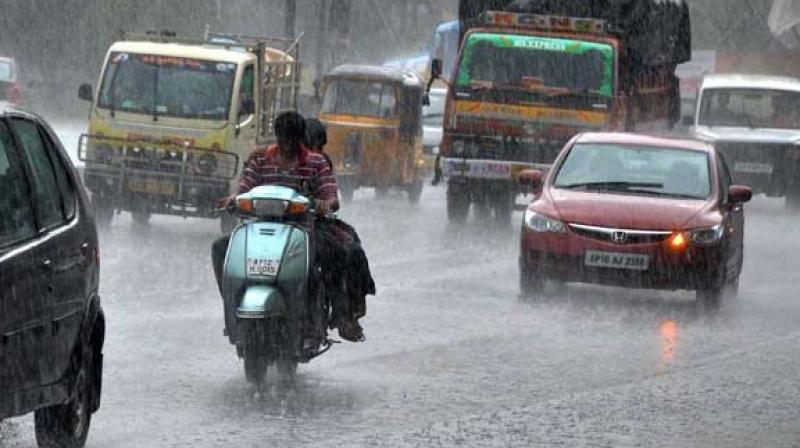Hyderabad: Concrete roads block rain flow
Experts suggested that housing societies should have soak pits in their premises and not cover the open space with cement or paving blocks.

Hyderabad: Despite the bountiful rain so far, the percolation of rainwater into the ground has drastically fallen due to the increased concrete on the city roads.
Experts say the GHMC must look for a parallel stream along the road for the water to seep in. Also high grade bitumen (M30, M35) if used can help water seepage. Rainwater is the main source of groundwater recharge.
“After roads were asphalted and stone slabs were placed on footpaths, the rainwater run off has increased and groundwater recharge has declined. City roads are not slope designed. Rainwater falling on the road is not guided to the drains.” said Prof P.N. Rao, who is with the Central groundwater department.
He said the ideal situation is for the water to flow from the road to the sidewalk and then to the storm water drains. But most of the 9,000 km of roads in the city do not have parallel storm water drains.
To increase groundwater recharge by percolation and decrease of flooding of storm water drains, an infiltration trench could be built by the side of the drain all along the road, wherever possible, he said.
This trench should be two feet wide and two feet deep and filled with pebbles or aggregates with a top layer of coarse river sand, he said.
Experts from the groundwater survey agency claimed that the city’s rainwater percolation had reduced from 15 per cent to 5 per cent in the past decade.
Experts suggested that housing societies should have soak pits in their premises and not cover the open space with cement or paving blocks.
Every road should have storm water drains and recharging pits at both sides. Recharging pits should be created at specific distance to collect rainwater and help it to percolate.

